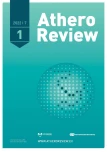The effect of mechanical circulatory supports on the vascular system
Authors:
Zuzana Tučanová 1; Peter Ivák 1,2,3; Jan Piťha 4,5
Authors‘ workplace:
Kardiocentrum, Klinika kardiovaskulární chirurgie IKEM, Praha
1; Ústav fyziologie 3. LF UK, Praha
2; II. chirurgická klinika - klinika kardiovaskulírní chirurgie 1. LF UK a VFN v Praze
3; Kardiocentrum, Klinika kardiologie IKEM, Praha
4; Centrum experimentální medicíny, Laboratoř pro výzkum aterosklerózy IKEM, Praha
5
Published in:
AtheroRev 2022; 7(1): 31-34
Category:
Reviews
Overview
The implantation of mechanical circulatory supports is, together with heart transplantation, the basic modality of therapy for the end-stage heart failure. The most frequent left ventricular assist devices with continuous flow improve survival and quality of life of their recipients, but they also put them at risk through a number of specific complications. One of the potential side effects under intensive discussion is unfavorable impact of continuous blood flow on the vascular system. A number of methods are used to study this phenomenon; among the most frequently used are imaging methods, including vascular ultrasound, but also laboratory methods including circulating microparticles, endothelial progenitor cells, microRNA etc. In this article we would like to summarize our previous findings and experiences in this field.
Keywords:
heart failure – mechanical circulatory support – vascular system
Sources
1. Goldstein DJ, Meyns B, Xie R et al. Third Annual Report From the ISHLT Mechanically Assisted Circulatory Support Registry: A comparison of centrifugal and axial continuous-flow left ventricular assist devices. J Heart Lung Transplant 2019; 38(4): 352–363. Dostupné z DOI: <http://dx.doi.org/10.1016/j.healun.2019.02.004>.
2. Molina EJ, Shah P, Kiernan MS et al. The Society of Thoracic Surgeons Intermacs 2020 Annual Report. Ann Thorac Surg 2021; 111(3): 778–792. Dostupné z DOI: <http://dx.doi.org/10.1016/j.athoracsur.2020.12.038>.
3. Helman DN, Rose EA. History of mechanical circulatory support. Prog Cardiovasc Dis 2000; 43(1): 1–4. Dostupné z DOI: <http://dx.doi.org/10.1053/pcad.2000.7194>.
4. Pasque MK, Rogers JG. Adverse events in the use of HeartMate vented electric and Novacor left ventricular assist devices: comparing apples and oranges. J Thorac Cardiovasc Surg 2002; 124(6): 1063–1067. Dostupné z DOI: <http://dx.doi.org/10.1067/mtc.2002.123520>.
5. Netuka I, Ivák P, Tučanová Z et al. Evaluation of low-intensity anti-coagulation with a fully magnetically levitated centrifugal-flow circulatory pump - the MAGENTUM 1 study. J Heart Lung Transplant 2018; 37(5): 579–586. Dostupné z DOI: <http://doi: 10.1016/j.healun.2018.03.002>.
6. Mehra MR, Crandall DL, Gustafsson F et al. Aspirin and left ventricular assist devices: rationale and design for the international randomized, placebo-controlled, non-inferiority ARIES HM3 trial. Eur J Heart Fail 2021; 23(7):1226–1237. Dostupné z DOI: <http://doi: 10.1002/ejhf.2275>.
7. Kirklin JK, Pagani FD, Kormos RL et al. Eighth annual INTERMACS report: Special focus on framing the impact of adverse events. J Heart Lung Transplant 2017; 36(10): 1080–1086. Dostupné z DOI: <http://dx.doi.org/10.1016/j.healun.2017.07.005>.
8. Acharya D, Loyaga-Rendon R, Morgan CJ et al. INTERMACS Analysis of Stroke During Support With Continuous-Flow Left Ventricular Assist Devices: Risk Factors and Outcomes. JACC Heart Fail 2017; 5(10): 703–711. Dostupné z DOI: <http://dx.doi.org/10.1016/j.jchf.2017.06.014>.
9. Zimpfer D, Gustafsson F, Potapov E et al. Two-year outcome after implantation of a full magnetically levitated left ventricular assist device: results from the ELEVATE Registry. Eur Heart J 2020; 41(39): 3801–3809. Dostupné z DOI: <http://dx.doi.org/10.1093/eurheartj/ehaa639>.
10. Cornwell WK, Ambardekar AV, Tran T et al. Stroke Incidence and Impact of Continuous-Flow Left Ventricular Assist Devices on Cerebrovascular Physiology. Stroke 2019; 50(2): 542–548. Dostupné z DOI: <http://doi:10.1161/STROKEAHA.118.022967>.
11. Ivak P, Pitha J, Wohlfahrt P et al. Endothelial dysfunction expressed as endothelial microparticles in patients with end-stage heart failure. Physiol Res 2014; 63(Suppl 3): S369-S373. Dostupné z DOI: <http://dx.doi.org/10.33549/physiolres.932866>.
12. Ivak P, Pitha J, Wohlfahrt P at al. Biphasic response in number of stem cells and endothelial progenitor cells after left ventricular assist device implantation: A 6 month follow-up. Int J Cardiol 2016; 218 : 98–103. Dostupné z DOI: <http://dx.doi.org/10.1016/j.ijcard.2016.05.063>.
13. Ivak P, Netuka I, Kralova-Lesna I et al. Changes in circulating stem cells and endothelial progenitor cells over a 12-month period after implantation of a continuous-flow left ventricular assist device. Arch Med Sci 2020; 16(6):1440–1443. Dostupné z DOI: <http://dx.doi.org/10.5114/aoms.2020.100306>.
14. Ivak P, Netuka I, Tucanova Z et al. The Effect of Artificial Pulsatility on the Peripheral Vasculature in Patients With Continuous-Flow Ventricular Assist Devices. Can J Cardiol 2021; 37(10): 1578–1585. Dostupné z DOI: <http://dx.doi.org/10.1016/j.cjca.2021.05.013>.
15. Tucanova Z, Ivak P, Wohlfahrt P et al. Increased pulsatility index is associated with adverse outcomes in left ventricular assist device recipients. ESC Heart Fail 2021; 8(5): 4288–4295. Dostupné z DOI: <http://dx.doi.org/10.1002/ehf2.13537>.
16. Segura AM, Gregoric I, Radovancevic R et al. Morphologic changes in the aortic wall media after support with a continuous-flow left ventricular assist device. J Heart Lung Transplant 2013; 32(11): 1096–1100. Dostupné z DOI: <http://dx.doi.org/10.1016/j.healun.2013.07.007>.
17. Templeton DL, John R, Painter P et al. Effects of the left ventricular assist device on the compliance and distensibility of the carotid artery. Heart Vessels 2013; 28(3): 377–384. Dostupné z DOI: <http://dx.doi.org/10.1007/s00380–012–0271–4>.
18. Ivak P, Pitha J, Netuka I. Circulating microparticles as a predictor of vascular properties in patients on mechanical circulatory support; hype or hope? Physiol Res 2016; 65(5): 727–735. Dostupné z DOI: <http://dx.doi.org/10.33549/physiolres.933246>.
19. Bayraktar R, Van Roosbroeck K, Calin GA. Cell-to-cell communication: microRNAs as hormones. Mol Oncol 2017; 11(12): 1673–1686. Dostupné z DOI: <http://dx.doi.org/10.1002/1878–0261.12144>.
20. Dlouha D, Ivak P, Netuka I et al. The effect of long-term left ventricular assist device support on flow-sensitive plasma microRNA levels. Int J Cardiol 2021; 339 : 138–143. Dostupné z DOI: <http://dx.doi.org/10.1016/j.ijcard.2021.06.050>.
21. Mehra MR, Uriel N, Naka Y, et al. A Fully Magnetically Levitated Left Ventricular Assist Device – Final Report. N Engl J Med 2019; 380(17): 1618 – 1627. Dostupné z DOI: <http://dx.doi.org/10.1056/NEJMoa1900486>.
Labels
Angiology Diabetology Internal medicine Cardiology General practitioner for adultsArticle was published in
Athero Review

2022 Issue 1
Most read in this issue
- Early prevention of cardiovascular events – recent data and practical approach
- Familial dysbetalipoproteinemia: known unknown
- Immuno-thrombosis, coagulopathy, pulmonary embolism and diagnosis in patients with COVID-19
- The effect of mechanical circulatory supports on the vascular system
